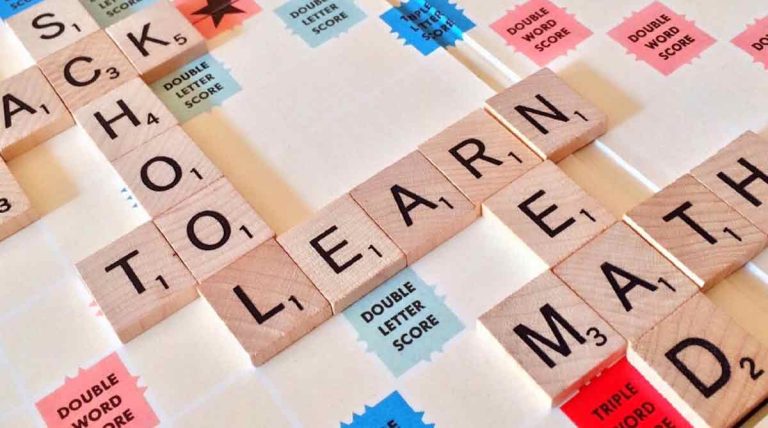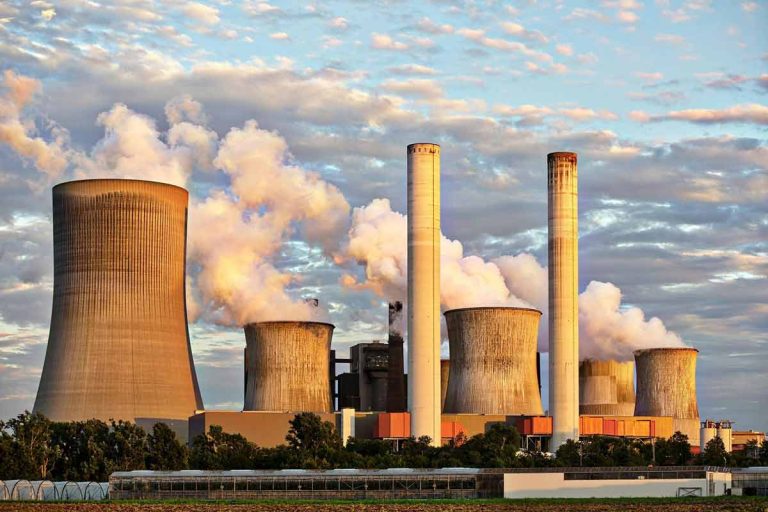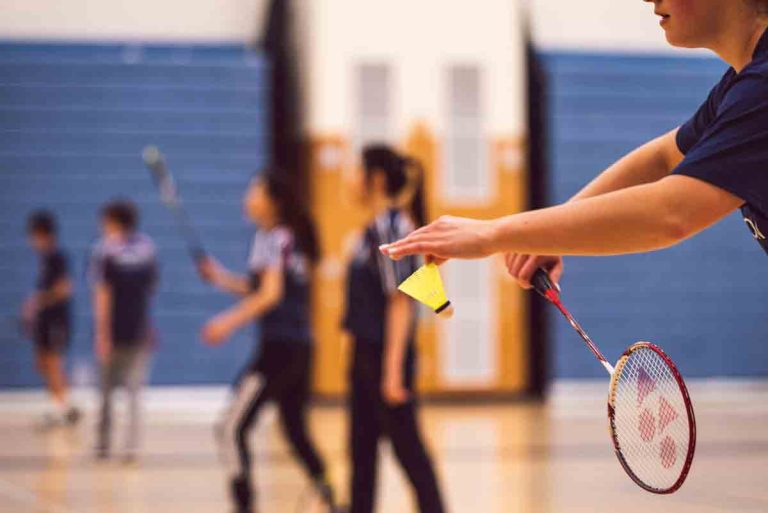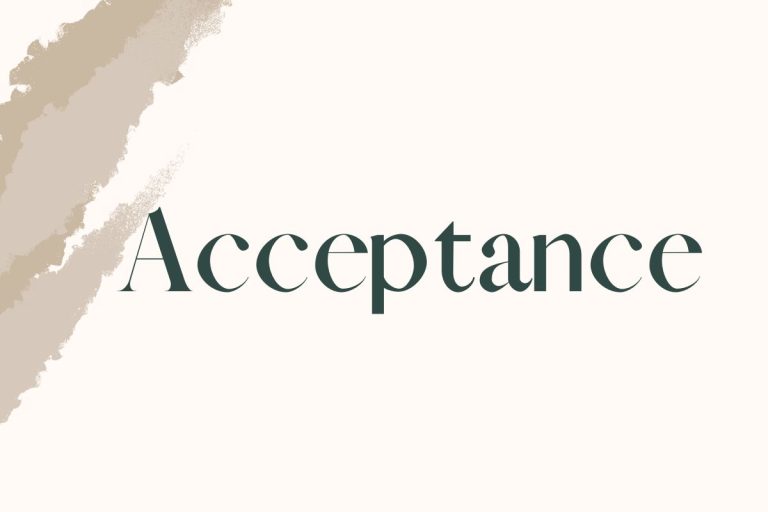Female Education Paragraph – From Every Perspective
In a world where knowledge is power, the empowerment of women through education becomes not just a matter of equality but one of absolute necessity.
In this female education paragraph we will learn the impact of female education transcends generations, reshaping societies and economies with each educated woman taking her place as a catalyst for progress.
Imagine a world where every girl has access to quality education, where the barriers that have long stifled their potential are dismantled, and where the collective brilliance of women lights up the path toward a brighter future for all. This is the transformative power of female education – a force that not only empowers individuals but also drives societal advancement on an unprecedented scale.
Paragraph on Female Education 100 Words
Education is like a magic key that opens many doors, and it’s super important for everyone, including females! When females go to school and learn lots of cool stuff, it helps them become strong and smart. They learn about numbers, letters, science, and so much more! When females learn, they can do awesome things like become doctors, scientists, teachers, or even leaders of their country! Plus, when females know more, they can help make the world a better place for everyone by sharing their ideas and talents.
So, let’s make sure all females get to go to school and learn all they can because educated females can do anything they dream of!
Paragraph on Female Education 150 Words
Female education stands as a beacon of progress and empowerment in societies worldwide. It is the cornerstone of gender equality, fostering not only individual growth but also societal advancement. By investing in the education of girls and women, we unlock a cascade of benefits that reverberate across generations.
Educated women are more likely to participate in the workforce, contribute to economic development, and make informed decisions about their health and well-being. Moreover, they play pivotal roles in nurturing future generations and shaping the values and aspirations of their families and communities. Beyond its socioeconomic impact, female education is a fundamental human right, enabling women to assert their autonomy, challenge discriminatory norms, and pursue their aspirations without barriers.
As we champion the cause of female education, we must dismantle systemic obstacles, address disparities in access and quality, and foster inclusive environments where every girl has the opportunity to thrive and realize her full potential. In essence, investing in female education is not just a moral imperative but a strategic imperative for building a more equitable, prosperous, and sustainable world.
Paragraph on Female Education 200 Words
Female education, the provision of learning opportunities specifically tailored for girls and women, has historically been a battleground for gender equality. Pioneers such as Mary Wollstonecraft, who advocated for women’s rights and education in the 18th century, laid the groundwork for the transformative power of educating women.
It’s not merely about teaching academic subjects; it’s about empowering individuals to challenge societal norms, pursue their aspirations, and contribute meaningfully to their communities. The importance of female education transcends individual empowerment; it’s a catalyst for societal progress. Feminism, the belief in social, political, and economic equality of the sexes, underpins the fight for female education, recognizing it as a fundamental human right. Educated women are agents of change, breaking the cycle of poverty, reducing child mortality rates, and fostering healthier, more prosperous societies.
However, despite its undeniable benefits, female education still faces resistance in some quarters. Deep-rooted stereotypes, cultural barriers, and lack of resources continue to hinder progress. Yet, as awareness grows and advocacy efforts intensify, the tide is slowly turning. People are beginning to recognize that investing in female education isn’t just a moral obligation; it’s a strategic imperative for building a more equitable, inclusive world where every individual has the opportunity to thrive and contribute to the collective advancement of humanity.
Female Education Paragraph 250 Words
Education is like a superpower that everyone deserves, regardless of gender. It’s especially important for females! When females have the opportunity to go to school and learn, amazing things happen. They discover new ideas, develop skills, and become empowered to shape their futures.
In school, females learn all sorts of exciting things – from reading and writing to math, science, history, and more. This knowledge isn’t just for tests; it’s a tool they can use to achieve their dreams. With education, females can pursue careers as doctors, engineers, artists, entrepreneurs, and leaders. They can contribute their unique talents and perspectives to make the world a better place for everyone.
But education isn’t just about personal success. When females are educated, entire communities benefit. Educated females are more likely to marry later, have fewer children, and invest in their families’ well-being. They also tend to advocate for important issues like healthcare, environmental protection, and human rights.
Unfortunately, not all females have the same opportunities to learn. Some face barriers like poverty, discrimination, or cultural norms that limit their access to education. That’s why governments, organizations, and communities must work together to ensure that all females have equal opportunities to learn and thrive.
By investing in female education, we invest in the future. Educated females become leaders, innovators, and changemakers who inspire others and drive progress. So let’s make sure every female has the chance to unlock her full potential through education – because when females succeed, we all succeed.
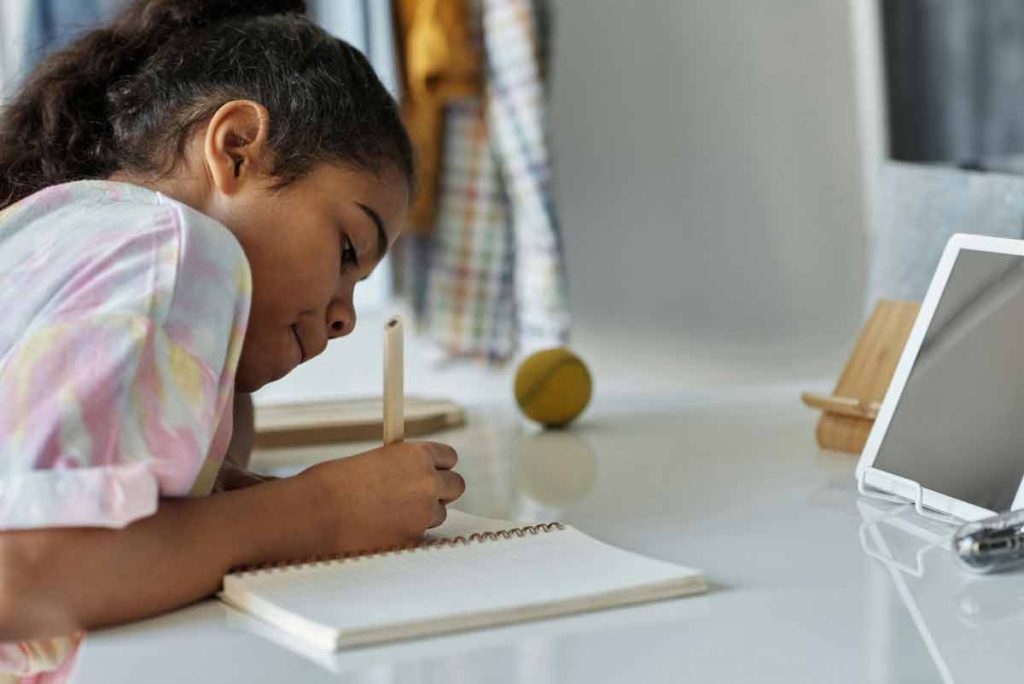
Female Education Paragraph 300 Words
Female education emerges as a cornerstone of societal advancement, embodying a relentless journey toward gender equality and the acknowledgment of women’s rights across cultures and epochs. Spanning epochs, the narrative of female education reveals a tapestry woven with resilience, determination, and collective endeavor, confronting formidable obstacles along its path.
From the ancient echoes of Mesopotamia and Egypt to the modern complexities of global society, women have grappled with cultural norms, economic disparities, and institutional hurdles in their pursuit of learning. Pioneers like Mary Wollstonecraft, who fervently championed women’s intellectual capacities in the 18th century, to contemporary icons like Malala Yousafzai, whose unwavering advocacy for girls’ education garnered global attention, have catalyzed progress by challenging entrenched norms and advocating for educational equity. In diverse corners of the world, figures like Emma Willard in the United States, Razia Sultan in medieval India, and Begum Rokeya in colonial Bengal carved pathways to education for women, confronting social mores and institutional barriers with audacity and innovation. Their legacies resonate in the landscape of female education, which has witnessed remarkable strides – from increased enrollment and narrowing gender gaps to higher literacy rates and expanded access to higher education for women and girls globally.
Yet, the journey remains fraught with challenges, as women tussle with poverty, child marriage, violence, and security concerns that impede their educational aspirations. Despite these adversities, women and girls have showcased unparalleled resilience, mobilizing communities, raising awareness, and challenging entrenched inequalities through grassroots movements, advocacy campaigns, and community-led initiatives.
Their stories of triumph inspire generations, illustrating the transformative power of education in shaping individual lives and catalyzing societal change. As we navigate the complexities of the 21st century, honoring the resilience and achievements of women and girls who have defied the odds in pursuit of education becomes paramount. Their collective endeavors underscore the imperative of continuing the fight for gender equality, ensuring that every woman and girl has the opportunity to realize her full potential through education, thereby fostering a more just and equitable world for generations to come.
Write Your Female Education Paragraph after Reading These:
What is Female Education?
Female education refers to the provision of learning opportunities specifically tailored for girls and women. It encompasses formal education within schools and universities, as well as informal education within communities and households. This holistic approach aims to equip females with knowledge, skills, and confidence to thrive personally, professionally, and socially.
History of Female Education
The history of female education is a testament to the ongoing struggle for gender equality and the recognition of women’s rights to education. While the timeline varies across cultures and regions, here are some key milestones:
- Ancient Civilizations: In ancient civilizations such as Mesopotamia, Egypt, and China, there were instances of education for women, primarily among the elite classes. However, access to education was often limited and focused on preparing women for domestic roles and motherhood.
- Medieval Period: During the Middle Ages, convents and monasteries in Europe provided some opportunities for education to women who chose religious life. However, formal education for most women was scarce, and literacy rates remained low.
- Renaissance and Enlightenment: The Renaissance and Enlightenment periods saw a gradual expansion of educational opportunities for women, particularly among the nobility and upper classes. Women like Christine de Pizan in Europe and Murasaki Shikibu in Japan gained recognition for their literary achievements, albeit in limited circles.
- 19th Century: The 19th century witnessed significant progress in the movement for female education. Pioneers such as Emma Willard in the United States and Mary Lyon with the founding of Mount Holyoke College advocated for the establishment of schools and colleges for women. Additionally, the suffragist movement brought attention to women’s rights, including access to education.
- Colonial and Post-Colonial Eras: Colonial powers often introduced educational reforms that included provisions for girls’ schooling in their colonies. However, these efforts were often uneven and aimed at serving colonial interests. In the post-colonial era, newly independent nations began to prioritize education for all, including girls, as part of nation-building efforts.
- 20th Century and Beyond: The 20th century witnessed a global expansion of female education, with efforts focused on achieving universal primary education and closing the gender gap in schooling. International initiatives such as the United Nations’ Millennium Development Goals and Sustainable Development Goals have prioritized girls’ education as a key development objective.
Despite progress, challenges persist, including cultural norms, economic disparities, and systemic barriers that continue to limit access to education for many girls and women around the world. The history of female education serves as a reminder of the resilience and determination of individuals and movements advocating for gender equality and the right to education for all.
Pioneers of Female Education
Throughout history, numerous individuals and movements have pioneered female education, advocating for equal access to learning regardless of gender. Here are some notable figures:
- Mary Wollstonecraft (1759-1797): Renowned for her work “A Vindication of the Rights of Woman,” Wollstonecraft argued passionately for the education of women, asserting that they were capable of rationality and should have access to education equivalent to that of men.
- Emma Willard (1787-1870): An American educator, Willard founded the Troy Female Seminary in 1821, one of the first schools in the United States dedicated to the education of girls. Her efforts contributed significantly to the advancement of female education in the 19th century.
- Malala Yousafzai (1997-present): A contemporary icon of female education, Malala’s courageous advocacy for girls’ right to education in Pakistan gained international attention. Despite facing threats from the Taliban, she continues to campaign globally for the education of all children, particularly girls.
- Razia Sultan (1205–1240): A historic figure from the Delhi Sultanate in the Indian subcontinent, Razia Sultan defied societal norms by ascending to the throne. She prioritized education, establishing schools and libraries, and promoting learning among women during her reign.
- Begum Rokeya (1880-1932): Begum Rokeya, also known as Rokeya Sakhawat Hossain, was a pioneering Bengali writer, feminist, and social reformer. She was a strong advocate for gender equality and female education in British India. Rokeya established the first school for Bengali Muslim girls in Kolkata (then Calcutta) in 1911, named Sakhawat Memorial Girls’ School, which aimed to provide education to girls beyond traditional domestic roles. She believed that education was the key to women’s empowerment and fought against the prevalent social norms that restricted women’s access to education. Rokeya’s literary works, including her famous novella “Sultana’s Dream,” depicted a world where women were educated, independent, and active participants in society. Her legacy continues to inspire generations of women to pursue education and break barriers.
These pioneers, among many others, have paved the way for the recognition and advancement of female education worldwide.
Importance of Female Education
Female education is not just a matter of equity and justice; it is a fundamental catalyst for societal progress and development. Here are some reasons why investing in female education is crucial:
| Aspect of Female Education | Description | Importance |
|---|---|---|
| Enrollment Rates | The percentage of girls enrolled in educational institutions compared to boys. | High enrollment rates signify improved access to education for girls, reflecting societal progress towards gender equality. |
| Literacy Rates | The percentage of females who can read and write compared to males. | Literacy is crucial for personal development, economic empowerment, and participation in civic life. Closing the gender literacy gap is a key goal for education systems globally. |
| Educational Attainment | The level of education achieved by females compared to males, often measured by completion of primary, secondary, or tertiary education. | Higher educational attainment among females correlates with better career opportunities, economic growth, and social development. |
| Access to STEM Education | Representation of females in Science, Technology, Engineering, and Mathematics (STEM) fields. | Increasing female participation in STEM is vital for fostering innovation, closing gender gaps in technology-related industries, and promoting diversity in these fields. |
| Gender Parity Index (GPI) | A measure comparing the ratio of female to male enrollment rates, literacy rates, or other educational indicators. A GPI of 1 indicates gender parity. | Achieving a GPI close to 1 signifies progress towards gender equality in education, highlighting efforts to remove barriers and biases against females in schooling. |
| Quality of Education | The extent to which educational resources, facilities, and teaching methods cater to the needs of female students. | Ensuring quality education for girls is essential for their holistic development and future success. Quality education includes factors such as inclusive curriculum, trained teachers, safe learning environments, and access to necessary resources. |
- Empowerment and Agency: Education empowers women by providing them with knowledge, skills, and confidence to make informed decisions about their lives. Educated women are more likely to have control over their bodies, pursue their aspirations, and advocate for their rights.
- Health and Well-being: Educated women tend to have better health outcomes for themselves and their families. They are more likely to seek healthcare services, practice preventive measures, and make informed choices regarding nutrition, hygiene, and family planning, leading to reduced maternal and child mortality rates.
- Economic Growth: Female education is closely linked to economic development. When women are educated, they are better equipped to participate in the workforce, start businesses, and contribute to the economy. Studies show that investing in girls’ education can lead to higher household incomes, poverty reduction, and overall economic growth.
- Gender Equality: Education is a powerful tool for challenging gender stereotypes and promoting gender equality. By providing girls with equal access to education, societies can break down barriers that perpetuate gender discrimination and create more inclusive and equitable communities.
- Social Progress: Educated women play active roles in building stronger and more resilient societies. They are more likely to be engaged in civic activities, participate in decision-making processes, and advocate for social justice issues, leading to positive changes in their communities and beyond.
- Inter-generational Impact: The benefits of female education extend beyond individual women to future generations. Educated mothers are more likely to prioritize their children’s education, resulting in improved educational outcomes for the next generation and breaking the cycle of poverty.
In essence, investing in female education is not only a moral imperative but also a strategic investment with far-reaching benefits for individuals, communities, and nations alike.
Progress of Female Education
Over the past century, there has been significant progress in advancing female education worldwide, driven by advocacy, policy interventions, and global initiatives. Here are some key indicators of this progress:
- Increased Enrollment: Globally, there has been a significant increase in the enrollment of girls in schools at all levels, from primary to tertiary education. Efforts to eliminate gender disparities in education have led to more girls having access to schooling and staying enrolled longer.
- Closing Gender Gaps: Gender gaps in education, particularly at the primary and secondary levels, have narrowed in many regions. In some countries, girls now outnumber boys in primary and secondary school enrollment, reflecting efforts to promote gender equality in education.
- Higher Literacy Rates: The literacy rates among females have shown steady improvement, with more girls and women gaining basic literacy skills. Education campaigns and initiatives targeting female literacy have contributed to this positive trend, empowering women to participate more fully in society.
- Increased Access to Higher Education: More women are pursuing higher education and participating in tertiary-level institutions than ever before. This trend is evident in the growing number of female graduates from universities and colleges worldwide, contributing to a more educated female workforce.
- Policy Reforms: Governments and international organizations have implemented policy reforms aimed at promoting female education and gender equality in education systems. These reforms include measures to eliminate school fees, provide scholarships for girls, and address gender-based violence in schools.
- Empowerment and Leadership: Female education has empowered women to take on leadership roles in various sectors, including politics, business, academia, and civil society. Educated women are increasingly advocating for their rights, challenging stereotypes, and driving social change.
While significant progress has been made, challenges remain in ensuring equitable access to quality education for all girls and women. Factors such as poverty, cultural barriers, child marriage, conflict, and inadequate infrastructure continue to hinder educational opportunities for many females, particularly in marginalized communities and developing countries.
Moving forward, sustained efforts are needed to address these challenges and build on the progress made, with a focus on inclusive and equitable education systems that prioritize the needs of girls and women. Investing in female education is not only a matter of human rights but also a strategic imperative for achieving sustainable development and fostering a more just and equitable world.
The Struggle for Female Education and How They Succeed
The struggle for female education has been characterized by various barriers, including cultural norms, economic disparities, discriminatory practices, and systemic obstacles. Here’s a closer look at some of these challenges and how women and girls have overcome them:
- Cultural Norms and Gender Stereotypes: Deep-rooted cultural beliefs often prioritize boys’ education over girls’, perpetuating gender disparities in access to education. Women and girls face societal expectations that limit their educational opportunities and reinforce traditional gender roles. However, through advocacy, awareness-raising, and community engagement, women and girls have challenged these norms and asserted their right to education.
- Economic Barriers: Poverty remains a significant barrier to education, particularly for girls from marginalized communities. Factors such as school fees, uniform costs, and transportation expenses can prevent families from sending their daughters to school. To overcome economic barriers, women and girls have sought scholarships, financial assistance, and income-generating opportunities to fund their education. Additionally, microfinance initiatives and community-based support networks have provided resources and support to aspiring female students.
- Child Marriage and Early Parenthood: Child marriage and early parenthood often disrupt girls’ education, as they are forced to drop out of school to fulfill familial and marital obligations. However, organizations and activists have campaigned against child marriage, advocating for legal reforms, awareness programs, and support services for at-risk girls. By empowering girls with information, skills, and resources, they can make informed choices about their futures and pursue their education despite societal pressures.
- Violence and Security Concerns: In many regions, girls face security threats and violence on their way to school, deterring them from attending classes. To address safety concerns, communities have implemented measures such as safe transportation, gender-sensitive infrastructure, and school-based interventions to ensure girls’ security and well-being. By creating safe learning environments, girls can access education without fear of harm or harassment.
Despite these challenges, women and girls have demonstrated remarkable resilience and determination in pursuing their education and achieving success. Through grassroots movements, advocacy campaigns, and community-led initiatives, they have mobilized support, raised awareness, and challenged entrenched inequalities. Their stories of perseverance, courage, and triumph inspire others to overcome obstacles and strive for educational empowerment.
Success stories abound, showcasing the transformative impact of education on women’s lives and the broader community. From girls who defy expectations to become the first in their families to attend university to women who use their education to advocate for social change and uplift their communities, the journey of female education is filled with stories of resilience, empowerment, and triumph over adversity.
As we continue to champion female education, it is essential to recognize and celebrate the resilience and achievements of women and girls who have defied the odds to pursue their dreams and make a difference in the world.
Word Meaning
| Word | Meaning/Definition |
|---|---|
| Beacon | A guiding or signaling device, a source of inspiration or guidance. |
| Cascade | A process where one event leads to a series of similar events. |
| Reverberate | To have a continuing effect or impact; to resonate or echo. |
| Imperative | Absolutely necessary or required; essential. |
| Resilience | The ability to recover quickly from difficulties or setbacks. |
| Endeavor | A serious attempt or effort to achieve a goal. |
| Norms | Accepted standards or patterns of behavior in a society. |
| Pioneers | People who are the first to develop or explore something new. |
| Resonate | Necessary or required; essential. |
| Audacity | Boldness or daring, especially with confident or arrogant disregard for personal safety or conventional thought. |
| Epoch | A period of time in history or a person’s life, typically one marked by notable events or particular characteristics. |
| Endeavors | Serious attempts or efforts to achieve a goal or result. |
| Advocacy | The act of supporting a cause or idea; active support or promotion. |
| Imperative | Of vital importance; crucial; essential. |
| Grassroots | Relating to the ordinary people in a society or organization rather than to the leaders or people who make decisions. |
| Mobilizing | Bringing people together for a common purpose, typically for a social or political movement. |
| Resilience | The capacity to recover quickly from difficulties; toughness. |
| Advocacy | The act of publicly supporting a particular cause or policy. |
| Adversities | Difficulties or misfortune; hardships. |
| Imperative | Of vital importance; crucial; essential. |
| Catalyst | A person or thing that precipitates an event or change. |
| Equity | The quality of being fair and impartial; fairness. |
| Inclusive | Including or covering all the services, facilities, or items normally expected or required. |
| Sustainable | Able to be maintained or continued over time; not harming the environment or depleting resources. |
| Endeavor | A serious and determined effort to do something. |
| Equity | Fairness and impartiality; justice. |
| Resilience | The capacity to recover quickly from difficulties; toughness. |
| Imperative | Of vital importance; crucial; essential. |
Important Female Achievements
| Name | Achievements |
|---|---|
| Marie Curie | Nobel Prize-winning physicist and chemist known for her pioneering research on radioactivity |
| Rosa Parks | Civil rights activist known for her pivotal role in the Montgomery Bus Boycott, igniting the civil rights movement in the US |
| Amelia Earhart | Aviation pioneer and the first female aviator to fly solo across the Atlantic Ocean |
| Jane Goodall | Primatologist and conservationist renowned for her groundbreaking research on chimpanzees and environmental activism |
| Ada Lovelace | Mathematician and writer, credited as the world’s first computer programmer for her work on Charles Babbage’s Analytical Engine |
| Oprah Winfrey | The first female Prime Minister of India, known for her political leadership and role in shaping India’s modern history |
| Frida Kahlo | Mexican artist known for her unique and vibrant self-portraits, exploring themes of identity, culture, and feminism |
| Indira Gandhi | The first female Prime Minister of the United Kingdom, known for her conservative policies and leadership during a transformative era in British politics |
| Eleanor Roosevelt | Longest-serving First Lady of the United States, diplomat, and activist, championing human rights and women’s empowerment globally |
| Harriet Tubman | Abolitionist and political activist known for her role in the Underground Railroad, helping enslaved individuals escape to freedom |
| Anne Frank | Jewish diarist known for her diary “The Diary of a Young Girl,” documenting her experiences hiding from the Nazis during the Holocaust |
| Marie Antoinette | Queen of France during the French Revolution, known for her cultural influence and controversial reign |
| Angela Merkel | First female Chancellor of Germany, known for her leadership in navigating the European Union through economic challenges and crises |
| Margaret Thatcher | First female Prime Minister of the United Kingdom, known for her conservative policies and leadership during a transformative era in British politics |
| Simone de Beauvoir | French writer, philosopher, and feminist theorist, known for her influential works on existentialism and feminist philosophy |
| Marie Curie | Nobel Prize-winning physicist and chemist known for her pioneering research on radioactivity |
| Rosalind Franklin | Chemist and X-ray crystallographer whose work was critical to the understanding of the molecular structures of DNA |
| Malala Yousafzai | Activist for female education and the youngest Nobel Prize laureate, advocating for girls’ right to education in Pakistan |
Conclusion
You must know female education is profound and far-reaching after reading this paragraph on female education. It not only empowers women to reach their full potential but also contributes to the overall development of society. By investing in girls’ education, we are investing in a brighter future for all.
Governments, communities, and individuals must prioritize and support female education initiatives. Let us work together to break down barriers and create equal opportunities for girls everywhere. It is time to ensure that every girl has the chance to learn, grow, and thrive – because when we educate a girl, we educate a nation.



